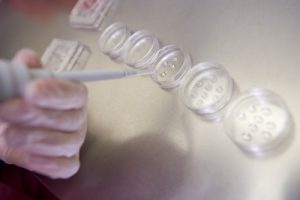 A cup of coffee with a former journalist colleague led Rhode Island radio reporter Lynn Arditi down the path of reporting on “superbugs,” the term for antibiotic-resistant bacteria.
A cup of coffee with a former journalist colleague led Rhode Island radio reporter Lynn Arditi down the path of reporting on “superbugs,” the term for antibiotic-resistant bacteria.
Arditi’s former colleague was working for LifeSpan, a large Rhode Island health system, and pitched her the story of a study authored by one of its lead researchers and infectious diseases specialists. The study was about the discovery of a set of compounds that could become a new class of antibiotics to treat drug-resistant bacteria.
Arditi is rarely receptive to public relations pitches from hospitals, but this one caught her interest because knew knew stories highlighting the potential for new antibiotics was in the public interest.
“Antibiotics are drugs that that Big PhRMA isn’t interested in investing in and so this study about a new class of antibiotics seemed to have more of a social purpose to me,” she said.
The study’s lead author, Dr. Eleftherios Mylonakis, had been working with researchers at the Warren Alpert Medical School of Brown University to screen thousands of compounds for their antibiotic potential. Finally, he found two, synthetic retinoids which are chemically related to Vitamin A, that fought off drug resistant Methicillin-Resistant Staphylococcus Aureus (MRSA) in mice.
MRSA primarily affects ill people in hospitals, in recent years it has spread into the general population, including healthy athletes and children and about 11,000 people die annually from a drug-resistant MRSA infection in the U.S.
The biggest challenge for Arditi, a former long-time print reporter, was how to tell a feature story about lab rats and a scientist on the radio. She found a way with radio technology, computer editing tools and good interviewing techniques.
Arditi talked more about how she produced the final story, the process of storytelling on the radio and advice on how to switch from a career in print reporting to the radio in this new “How I Did It” piece.








